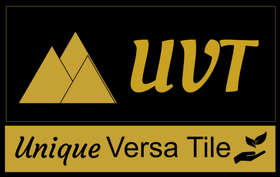When Do I Choose Rectified Versus Non-Rectified Tile?

To rectify or not-to-rectify - this is the question I am challenged to answer all the time. Embarrassingly I just could never remember the differences between the two and always had to double-check to make sure I was providing the correct information, that is until I finally learned the the reason for the different APPLICATIONS!
Below is a brief explanation with links to my research.
Overview:
- Rectified tiles offer precise edges and a modern look with thin grout lines,
- Non-rectified tiles have natural, uneven edges and a more traditional appearance.
Rectified: more uniform edges as they are post-fired during the machining process to create precise dimensions and straight edges. Grout lines may be as little as 1-2mm in width. The uniformity of the rectified tiles make them ideal for contemporary designs where clean lines are desired. Often used in large format tile installation to minimize lippage (the unevenness of the tile edges). Generally more expensive due to the additional machining process.

Image provided by Atlas Concorde | Atlas Plan
Non-Rectified: also known as pressed or straight edges are formed from the manufacturing process without any additional machining, therefore are the original edges. May have slightly uneven edges and slight variations in sizes contributing to a more rustic and traditional look. Grout lines can be from 3-5mm in width which can enhance the handcrafted feel of the installation. More budget friendly as they require less processing.

Image provided by Atlas Concorde | Atlas Plan
Sources:
Difference between Rectified Tiles vs. Non-Rectified Tiles
- Tags: best trends Bold Designs Bookmatch Countertops Creative Spaces Design Eco Friendly Endless Designs Futuristic Home Futuristic kitchen and bathroom design Interior Design Kitchen Countertops Large Format Tile Modern Living Porcelain Tile Slabs Sustainable Sustainable materials in home renovation Tile trends
- Sharron Martens

Comments 0